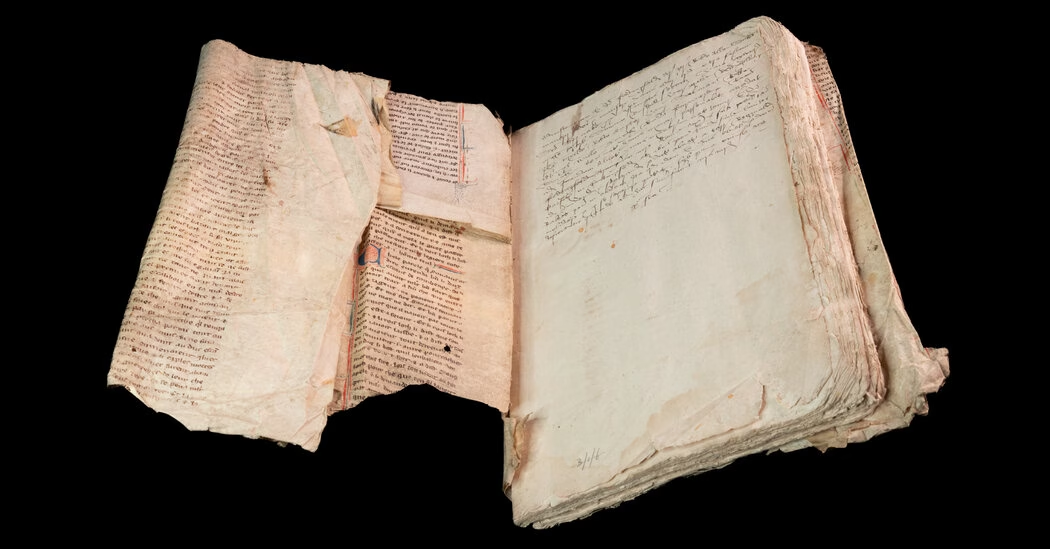Ancient stories of Merlin transforming into King Arthur’s court and Sir Gawain harnessing power from the sun have been uncovered after centuries of obscurity, tucked away among property records from the 1500s within a manor and later in a vast university library collection.
This discovery came to light when an archivist decided to take a closer look, leading to a multi-year initiative to identify and reassemble the medieval document, which was previously repurposed and used to repair a ledger in Tudor England.
The manuscript is a remarkable find: consisting of exceptionally rare tales of Arthurian romance, it was penned between 1275 and 1315 by a scribe and serves as a part of the “Suite Vulgate du Merlin,” an Old French extension to the inception of the Arthurian legend. This week, researchers at Cambridge University unveiled their findings and made a digital version of the manuscript available online.
There are less than 40 known copies of the Suite Vulgate sequel in existence, and none are identical.
Irène Fabry-Tehranchi, the French specialist at the university library, noted, “Every medieval text manuscript, hand-copied by a scribe, will slightly alter with time, reflecting each scribe’s personal style as they develop.”
Two stories are told in the manuscript.
The first narrative revolves around Sir Gawain, King Arthur’s nephew, who confronts insurrectionist barons and pagan Saxon invaders, even aligning with Arthur against his own father. The second account involves Arthur and Queen Guinevere’s feast being disrupted by a blind harpist, a magical Merlin in disguise, who requests a seemingly perilous wish to carry the king’s standard into battle.
Ms. Fabry-Tehranchi added that at its creation, the manuscript was considered a luxury item, probably brought to England by aristocrats acquainted with Old French as Arthurian romances gained popularity. However, as these stories were translated into English, the worth of such manuscripts diminished.
It is possible that their declining value is how they might have been used to reinforce other documents, such as a ledger at Huntingfield Manor in Suffolk during the 16th century.
In the 1970s, the manor’s collection was transferred to Cambridge; in 2019, an archivist recognized that the concealed manuscript warranted closer examination. The restoration process took years due to the fragile nature of the manuscript, which had been inserted into an already aged book.
Ms. Fabry-Tehranchi said, “We had to thoroughly examine every aspect of the manuscript.”
Restorers employed multispectral imaging and a CT scanner typically used for analyzing fossils to uncover hidden layers in the manuscript without physically dissecting it.
Using additional tools like mirrors, magnets, prisms, restorers took countless photos of hidden manuscript segments, resulting in an intricate puzzle of medieval Old French texts to be pieced together.
Hannah Weaver, a professor of medieval literature at Columbia University, who didn’t participate in the research, described the project as groundbreaking for utilizing cutting-edge technology to recover past cultural artifacts that may still exist but remain inaccessible due to various reasons.
She particularly admired the project’s digital reconstruction aspect and the potential applications for similar twisted manuscripts.
Ms. Fabry-Tehranchi shared a similar sentiment.
“There is still more to be revealed,” she said.
Source: https://www.nytimes.com/2025/03/28/world/europe/merlin-manuscript-cambridge.html





